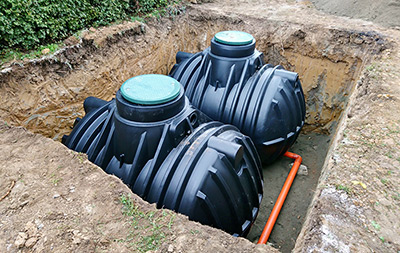
Site Evaluation: There are two considerations to "perc test" or site evaluation: 1) the soil type and 2) projected sewage usage. To determine your projected sewer usage, please check with your local health department or regulator agency. Please keep in mind, the site evaluation is done with a backhoe.
Soil Classification: Soil classification is determined by the US Department of Agriculture Soil Conservation Classification System. The importance of soil classification should not be underestimated. If the soil is inaccurately classified, it could cause unnecessary delays and expense. Please consult with a soil expert before proceeding with your septic system design project.
Designing a Septic System: Hire a septic system design engineer to design a septic system based on your house or building's plan; this will help to ensure that the septic system design meets all local regulations.
Department of Health Evaluation: In most states, the Department of Health is the agency that regulates septic systems. This agency also reviews and approves and/or denies septic system design plans. The engineer that designed your septic system will have to not only submit the designs, but also the soil classification results and the "perc test" or site evaluation in order for the plans to be considered for approval.
Approval: Congratulations! Your septic system design has been approved. If you followed the proper septic system design procedures, you should hear those words. If approved, the septic system engineer should give you a copy of the approved designs.
Now you have a basic understanding of the process for designing a septic system.
To schedule an appointment or for more information, contact Morse Engineering and Construction.
